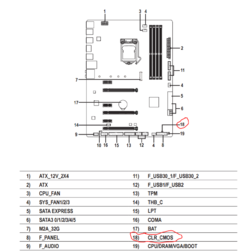I am trying to do the exact same thing as this person in this older thread: USB-Bootable-EFI-Shell-for-Gigabyte-GA-970A-DS3P
I am unable to get the board to boot to the UEFI Shell.
I tried the DOS method, but I get the PAL error, which means I need to use EFI. I copied the EFI to my DOS boot USB and I had a "UEFI: USB Drive, Partition 1" boot option. When I selected it the screen went blank and then went right back to the boot options.
I tried formatting the USB drive in plain FAT32 (non-bootable). I then have a "USB Drive" and "UEFI: USB Drive, Partion 1" option. Again the UEFI option just blinks and goes back to the boot option. Selection the plain "USB Drive" option didn't do anything and it booted to Windows instead.
I tried both MBR and GPT partitions.
I'm at a total loss here. I can't update these damn HBAs any other way, but I can't for the life of me figure out how to get into the UEFI shell.
Please help!
I am unable to get the board to boot to the UEFI Shell.
I tried the DOS method, but I get the PAL error, which means I need to use EFI. I copied the EFI to my DOS boot USB and I had a "UEFI: USB Drive, Partition 1" boot option. When I selected it the screen went blank and then went right back to the boot options.
I tried formatting the USB drive in plain FAT32 (non-bootable). I then have a "USB Drive" and "UEFI: USB Drive, Partion 1" option. Again the UEFI option just blinks and goes back to the boot option. Selection the plain "USB Drive" option didn't do anything and it booted to Windows instead.
I tried both MBR and GPT partitions.
I'm at a total loss here. I can't update these damn HBAs any other way, but I can't for the life of me figure out how to get into the UEFI shell.
Please help!
